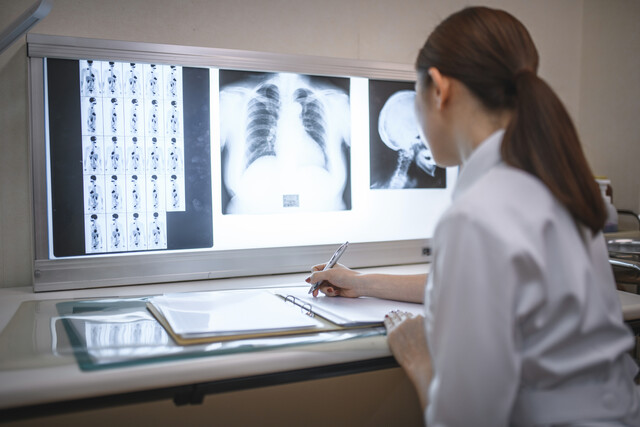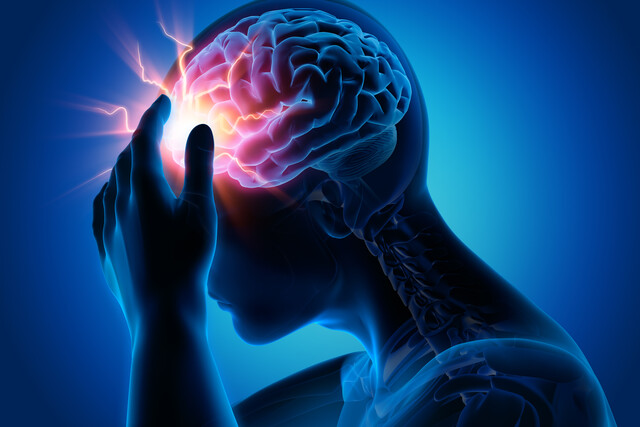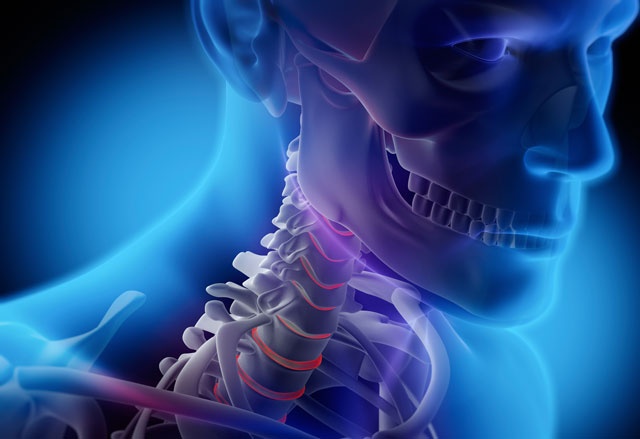Online Class: Medical Terminology for Medical Coders

no certificate
with CEU Certificate*
-
22Lessons
-
52Exams &
Assignments -
8,867Students
have taken this course -
14Hours
average time -
1.4CEUs
Course Description
Medical Terminology Mastery: Essential Knowledge for Modern Medical Coders
In an ever-evolving healthcare landscape, the accuracy and precision of medical documentation are more vital than ever. Medical coders serve as pivotal players in this complex system, ensuring correct terminology for proper patient care, billing, and overall communication. The World Health Organization notes that an estimated 20-25% of all medical errors are attributed to misunderstandings or miscommunication, many of which stem from incorrect medical terminology.
Why This Course?
To address the need for skilled and knowledgeable medical coders, we present our comprehensive course on Medical Terminology tailored specifically for today's medical coding professionals. Beyond just a glossary of terms, our course delves deep into the origins and structures of medical words, fostering a true understanding rather than rote memorization. By diving into the word roots, prefixes, and suffixes, you gain the tools to decipher even unfamiliar terms, a skill essential in an industry where new conditions, treatments, and technologies continually emerge.
Detailed Curriculum with Real-World Applications
Each section of the course dedicates itself to specific body systems, their related ailments, treatments, and procedures. For instance, when discussing the cardiovascular system, you won't just learn the terms; you'll understand conditions like 'atherosclerosis' by breaking it down: 'athero-' (fat), '-scler-' (hardness), and '-osis' (condition). Such insights can prove invaluable when coding complex medical records.
The course structure:
-
Foundational Lessons (1-3): Starting with medical basics, we then dive into the building blocks of medical words, ensuring a solid foundation.
-
Body System Focus (4-20): Each body system is explored in detail. For instance, the digestive system covers everything from common conditions like 'gastritis' to more intricate procedures.
-
Advanced Medical Procedures & Instrumentation (21): Gain insight into the tools and tests commonly used in today's medical world, enhancing your understanding and coding accuracy.
-
Final Exam (22): Assess your newly acquired knowledge and proficiency in medical terminology.
Throughout the course, real-world examples enhance understanding, making connections between the terms learned and their application in actual medical scenarios.
For Whom?
While beginners will find this course an invaluable resource in understanding and mastering medical terminology's vast landscape, seasoned coders will also benefit. With continuous medical advancements and the introduction of new terms and procedures, even experienced coders need periodic refreshers.
Benefits of Enrolling
-
Deep Understanding: Learn not just the what, but the why behind each term.
-
Career Advancement: With a solid grasp of medical terminology, you'll stand out in the job market and within your current organization.
-
Reduced Errors: With a clear understanding of terms, the chances of misinterpretation or mistakes diminish considerably.
-
CEUs: Many organizations recognize the completion of such courses in their Continuing Professional Development programs.
Final Word
In the intricate dance that is modern healthcare, every step, every term, and every code must be precise. Medical errors not only cost institutions in terms of finances but can have dire patient outcomes. As a medical coder, your role in this dance is pivotal. Equip yourself with the knowledge and confidence to excel in your role. Join us today, and embark on a journey to medical terminology mastery.
- Completely Online
- Self-Paced
- 6 Months to Complete
- 24/7 Availability
- Start Anytime
- PC & Mac Compatible
- Android & iOS Friendly
- Accredited CEUs

Course Lessons
Lesson 1. Basics of Medical Terminology
Discover the marvels of body architecture, from cells forming tissues and organs, to complex systems like the circulatory and nervous systems, that each play vital roles in survival. Embrace this knowledge to appreciate the intricacies of our biology and advocate for your health.Lesson 2. Essential Elements: Medical Terminology Simplified
Suffixes in medical terminology often convert word roots into nouns or adjectives, describing conditions and procedures like '-itis' for inflammation. Meanwhile, prefixes set the stage, adding nuances of number, time, or status, guiding interpretations beyond the medical realm.Lesson 3. Essential Body Orientation: Mastering Terms and Positions
Unlocking the secrets of body orientation, this lesson reveals the universal language of anatomy and physiology, enabling learners to communicate complex concepts with ease. By delving into anatomical positions, planes, and cavities, students develop a nuanced appreciation of the body's harmonious interplay of form and function.Lesson 4. Unlocking the Mysteries of the Human Body
Embarking on a journey through the microscopic world of cytology reveals the vital role of cellular processes and nuclear orchestration in life's sustainability. This microscopic dance enlightens us about cellular vulnerabilities and resilience, offering insights into disease mechanisms and prevention.Lesson 5. Understanding Cardiovascular System Basics
Dive into the cardiovascular system by identifying major structures through their combining forms, and learn about various pathological conditions that impact this vital body system. Gain knowledge on diagnostic tests and popular treatment modalities that assist in maintaining optimal cardiovascular health.Lesson 6. Understanding the Heart's Complexities
Cardiovascular pathology, including coronary artery disease, brings awareness to lifestyle and genetic factors affecting heart health. Advanced diagnostic and surgical techniques like angiography and coronary artery bypass grafts bolster effective management and recovery processes.Lesson 7. Nourishing Pathways: A Deep Dive into the Human Digestive System
Understanding the anatomy, function, and pathologies of the digestive system enriches appreciation for its crucial role in nutrition and health. By fostering healthy habits such as a balanced diet and regular exercise, we can support digestive harmony and enhance vitality.Lesson 8. Digestive Health: A Guide to Your Body's Engine
After passing through the stomach, chyme enters the small intestine, where nutrient absorption takes place with the help of the pancreas and liver. The large intestine concludes this journey by absorbing water and electrolytes, forming waste for elimination while accessory organs subtly enhance digestive efficiency.Lesson 9. The Role of the Lymphatic System in Health and Disease
The lymphatic system is a vital part of our body's defense and fluid regulation, with its structures playing key roles in immune cell production and pathogen filtration. By exploring its functions and common disorders, along with diagnostic and modern treatments, we gain a comprehensive understanding of its impact on our health.Lesson 10. Decoding the Structure and Function of the Musculoskeletal System
Focusing on the human musculoskeletal system, the lesson covers its role in movement and disease susceptibility. Thorough insights into diagnostics and treatments reveal ongoing research innovations, emphasizing the value of this vital body system.Lesson 11. The Musculoskeletal System Continued
The Musculoskeletal System Continued.Lesson 12. The Nervous System
Diagnostic tools such as CT scans, EEGs, MRIs, and PET scans unveil the brain's secrets, assisting in detecting and managing neurological disorders. These technologies are vital, revealing both structural and functional insights into the brain's activity and condition.Lesson 13. The Nervous System
The nervous system is a masterful biological framework, enabling thought, sensation, and physical motion through its complex structures and functions. Critical components like the brain, spinal cord, and nerves coordinate the body's responses, with conditions like Alzheimer's and Parkinson's posing significant challenges.Lesson 14. The Respiratory System
The respiratory system's intricate design facilitates gas exchange, with parts like alveoli, bronchioles, and the diaphragm playing crucial roles. Knowing common medical terminology enhances comprehension of both this system's anatomy and the conditions that can afflict it.Lesson 15. Unveiling the Marvels of Respiration
Designed to illuminate the respiratory system, the lesson offers insight into breathing mechanics and the intricate anatomy involved, from the nose to the lungs. By exploring medical terminology and conditions like bronchogenic carcinoma and asthma, learners gain a compassionate understanding of respiratory health.Lesson 16. The Intricate World of Skin and Sense Organs
The intricate structure of the eyes encapsulates optical wonders, critical for processing visual information and maintaining our connection to the environment. Early diagnosis and treatment of conditions like cataracts and glaucoma underscore the importance of regular eye health assessment.Lesson 17. Exploring Skin: From Protection to Pathology
From dissecting the layers of skin to unraveling complex terminology, this lesson emboldens learners to decode and engage with common integumentary conditions. It culminates in a strengthened vocabulary and understanding, necessary for proficiently addressing skin-related disorders and advocating patient health.Lesson 18. Essentials of Human Reproductive Health
Delving into the reproductive systems reveals how distinct structures like the uterus and testes orchestrate the creation of life, playing critical roles in hormonal balance and fertility. Understanding these systems encourages proactive health care, addressing common ailments, and fostering a healthier society.Lesson 19. Endocrine and Urinary Systems: Guardians of Homeostasis
Hormonal harmony and waste elimination epitomize the endocrine and urinary systems' roles respectively, showing how they sustain life's equilibrium. Disorders like diabetes or renal failure illustrate the critical importance of their functions, linking our hormonal and renal health directly to quality of life.Lesson 20. Unveiling the Human Genitourinary System
The kidneys filter around 180 liters of blood daily, showcasing their incredible efficiency and importance to overall health. The journey of urine from kidney to bladder is complex, highlighting the seamless cooperation of various anatomical structures.Lesson 21. Beyond Observation: The Dynamic Elements of Physical Examination
In the dynamic world of healthcare, a thorough physical examination employs various techniques such as inspection, palpation, percussion, and auscultation, alongside specialized instruments to discern critical health insights. This mastery not only aids in accurate diagnoses and treatment formulation but also underscores the holistic care and well-being of patients, harmonizing traditional methods with technological advancements.Lesson 22. From Curiosity to Competence: Navigating the Path of Lifelong Learning
In a world demanding continuous growth, lifelong learning emerges as a transformative process enriched by technology and community interaction. By personalizing learning paths and integrating engaging technologies, one can seamlessly adapt to ever-evolving demands.
Learning Outcomes
- Define key medical terms related to human body systems to accurately identify the functions of each system, such as the circulatory and respiratory systems.
- Differentiate between objective signs and subjective symptoms, and demonstrate their roles in diagnosing medical conditions.
- Construct and correctly interpret medical terms using learned word roots, prefixes, suffixes, and combining vowels for practical comprehension and application.
- Define and accurately identify basic medical word roots, prefixes, and suffixes in complex medical terminology.
- Define anatomical positions and directional terms to accurately describe spatial relationships within the human body.
- Identify and illustrate the different planes, divisions, and regions of the body to effectively communicate anatomical and physiological concepts.
- Classify and describe the roles of medical specialists in the diagnosis, treatment, and prevention of diseases
- Define cytology and explain its importance in understanding cellular processes and disease vulnerabilities
- Describe the various types of tissues in histology and explain their specific roles in bodily functions
- Explain the different disease transmission pathways and apply preventive measures to reduce the risk of infections
- Describe the common pathological conditions of the cardiovascular system, including symptoms and causes.
- Identify the major organ structures of the cardiovascular system using medical combining forms.
- Recognize key diagnostic tests for the cardiovascular system and explain their purpose.
- Demonstrate mastery of lesson content at levels of 70% or higher.
Additional Course Information

- Document Your Lifelong Learning Achievements
- Earn an Official Certificate Documenting Course Hours and CEUs
- Verify Your Certificate with a Unique Serial Number Online
- View and Share Your Certificate Online or Download/Print as PDF
- Display Your Certificate on Your Resume and Promote Your Achievements Using Social Media

Choose Your Subscription Plan
No Certificate / No CEUs
This course only
| Includes certificate | X |
| Includes CEUs | X |
| Self-paced |

|
| Instructor support |

|
| Time to complete | 6 months |
| No. of courses | 1 course |
Certificate & CEUs
This course only
| Includes certificate |

|
| Includes CEUs |

|
| Self-paced |

|
| Instructor support |

|
| Time to complete | 6 months |
| No. of courses | 1 course |
Certificates & CEUs
Includes all 600+ courses
| Includes certificate |

|
| Includes CEUs |

|
| Self-paced |

|
| Instructor support |

|
| Time to complete | 12 Months |
| No. of courses | 600+ |
Certificates & CEUs
Includes all 600+ courses
| Includes certificate |

|
| Includes CEUs |

|
| Self-paced |

|
| Instructor support |

|
| Time to complete | 24 Months |
| No. of courses | 600+ |
Student Testimonials
- "I really enjoyed this course and the instructor was great. Very quick to answer emails and helpful with all my questions and concerns." -- Danielle E.
- "This class was amazing and definitely loved all the information. Very well put together and easy to follow course. Thank you!" -- Danielle S.
- "I think this course was very, very helpful. It's been a while since I have had this type of class and it was really challenging and it brought me up to date with some of the medical terminology." -- Linda W.
- "I was very pleased with the response and response time that Diana gave. It made things easier knowing if I needed help I would be able to get it ASAP." -- Zina H.
- "This course is great and the instructor is excellent." -- Grace yetunde O.
- "Instructor was very helpful anytime I needed her assistance." -- Cameron C.
- "It was wonderful and very informative!" -- Hannah B.
- "The course and instructor were great." -- Nona J.
- "This course was very educational." -- Jasmine B.
Related Courses
-
 74 hours
7.4 CEUs
Medical Billing and Coding Course Bundle
+ More Info
74 hours
7.4 CEUs
Medical Billing and Coding Course Bundle
+ More Info
-
 6 hours
0.6 CEUs
HIPAA Compliance 101
+ More Info
6 hours
0.6 CEUs
HIPAA Compliance 101
+ More Info
-
 8 hours
0.8 CEUs
Medical Office Management
+ More Info
8 hours
0.8 CEUs
Medical Office Management
+ More Info
-
 17 hours
1.7 CEUs
ICD-10: Medical Coding
+ More Info
17 hours
1.7 CEUs
ICD-10: Medical Coding
+ More Info
-
 20 hours
2.0 CEUs
Introduction to Medical Coding
+ More Info
20 hours
2.0 CEUs
Introduction to Medical Coding
+ More Info
-
 12 hours
1.2 CEUs
Microbiology Mastery: Unlocking the Foundations of Life
+ More Info
12 hours
1.2 CEUs
Microbiology Mastery: Unlocking the Foundations of Life
+ More Info
-
 33 hours
3.3 CEUs
Comprehensive Medical Terminology 1 & 2
+ More Info
33 hours
3.3 CEUs
Comprehensive Medical Terminology 1 & 2
+ More Info
-
 2 hours
0.2 CEUs
Careers in Healthcare
+ More Info
2 hours
0.2 CEUs
Careers in Healthcare
+ More Info
-
 7 hours
0.7 CEUs
Understanding Concussions
+ More Info
7 hours
0.7 CEUs
Understanding Concussions
+ More Info
-
 18 hours
1.8 CEUs
Medical Terminology 101
+ More Info
18 hours
1.8 CEUs
Medical Terminology 101
+ More Info






